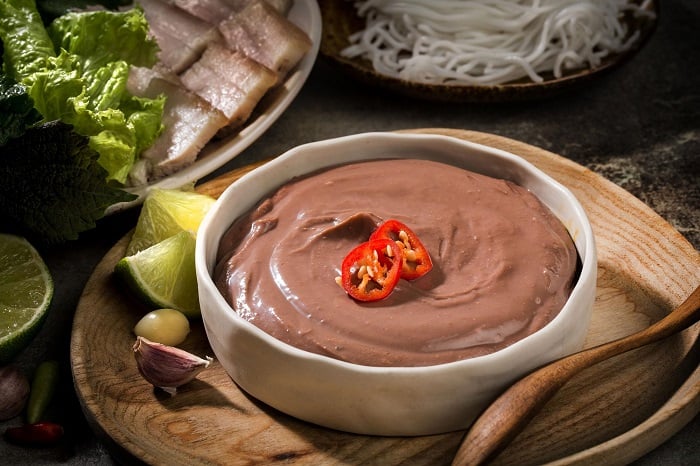- Address: Cua Lo sea area, Nghe An or at many famous tourist destinations

Every year from January to April of the lunar calendar, the fishermen in Cua Lo sea area eagerly call each other to pull the shrimp back to make fish sauce. Cua Lo fish sauce is used as a dipping sauce of many kinds, or served with, processed with many other dishes such as: braised meat, seasoned soup, rimmed with meat, congee… Regardless of the type of processing, it will bring flavor. unique and bring into full play the delicious taste of shrimp.
When you have the opportunity to visit Uncle’s hometown Nghe, the attractive dishes here will help you somewhat understand more about the cultural lifestyle of the residents here. And if you choose Nghe An as the destination for your culinary discovery journey. You should choose a place to stay that is both convenient in terms of geographical location and convenient in service and utility.
Source: Collected internet.
The cultural identity of ethnic groups is clearly expressed in community life and in economic activities from customs, costumes to culinary styles. Below are the unique features of Vietnamese culture that you can learn about.
Vietnam has an area of 331,690 km², located in the east of the Indochina peninsula, in Southeast Asia. Sharing a border with three countries, Vietnam borders China to the north, Laos and Cambodia to the west, and the East Sea to the east. In 2019, Vietnam's population was more than 96 million people, ranking 13th in the world. Hanoi, the capital of Vietnam, is the second largest city with 6.2 million people, after Ho Chi Minh City, 8.8 million people.
Officially Vietnamese (the language of the Vietnamese (Kinh) people). This is the mother tongue of about 85% of the Vietnamese population, along with nearly three million overseas Vietnamese, most of whom are Vietnamese Americans. Vietnamese is also the second language of ethnic minorities in Vietnam. Although Vietnamese has vocabulary borrowed from Chinese and previously used Chinese characters (Confucian script) to write, then converted to Nom script, today Vietnamese uses the Latin alphabet, called Quoc Ngu. , with diacritics to write...
Religion in Vietnam is quite diverse, including Buddhism (both Mahayana, Theravada and some modified groups such as Hoa Hao, Tu An Hieu Nghia); Christianity (including Catholicism and Protestantism); endogenous religions such as Cao Dai; and some other religions (Hinduism and Islam). Different types of folk beliefs also have a lot of influence. The majority of Vietnamese people consider themselves non-religious, even though they still go to religious sites several times a year...